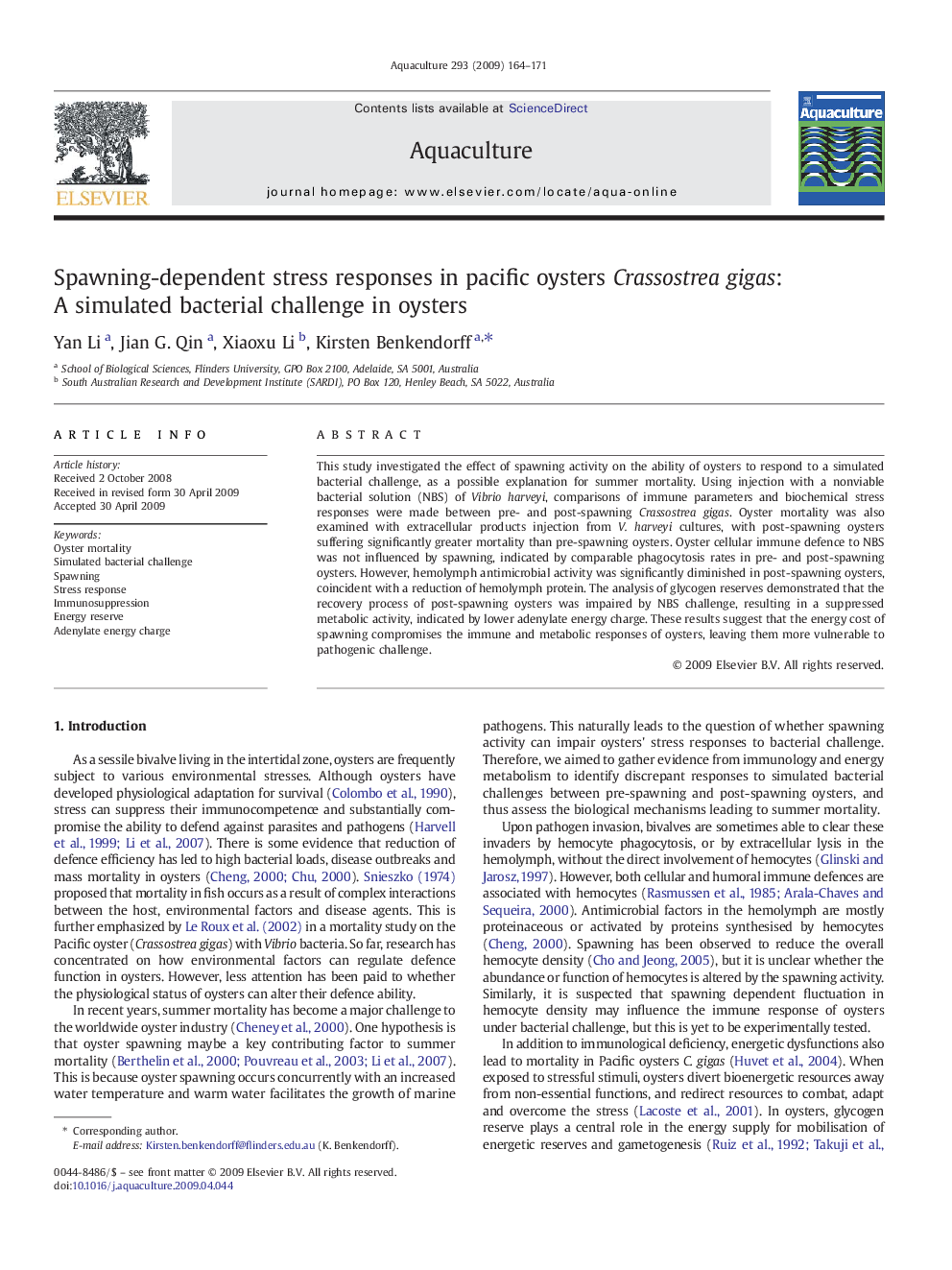| Article ID | Journal | Published Year | Pages | File Type |
|---|---|---|---|---|
| 2424050 | Aquaculture | 2009 | 8 Pages |
This study investigated the effect of spawning activity on the ability of oysters to respond to a simulated bacterial challenge, as a possible explanation for summer mortality. Using injection with a nonviable bacterial solution (NBS) of Vibrio harveyi, comparisons of immune parameters and biochemical stress responses were made between pre- and post-spawning Crassostrea gigas. Oyster mortality was also examined with extracellular products injection from V. harveyi cultures, with post-spawning oysters suffering significantly greater mortality than pre-spawning oysters. Oyster cellular immune defence to NBS was not influenced by spawning, indicated by comparable phagocytosis rates in pre- and post-spawning oysters. However, hemolymph antimicrobial activity was significantly diminished in post-spawning oysters, coincident with a reduction of hemolymph protein. The analysis of glycogen reserves demonstrated that the recovery process of post-spawning oysters was impaired by NBS challenge, resulting in a suppressed metabolic activity, indicated by lower adenylate energy charge. These results suggest that the energy cost of spawning compromises the immune and metabolic responses of oysters, leaving them more vulnerable to pathogenic challenge.
